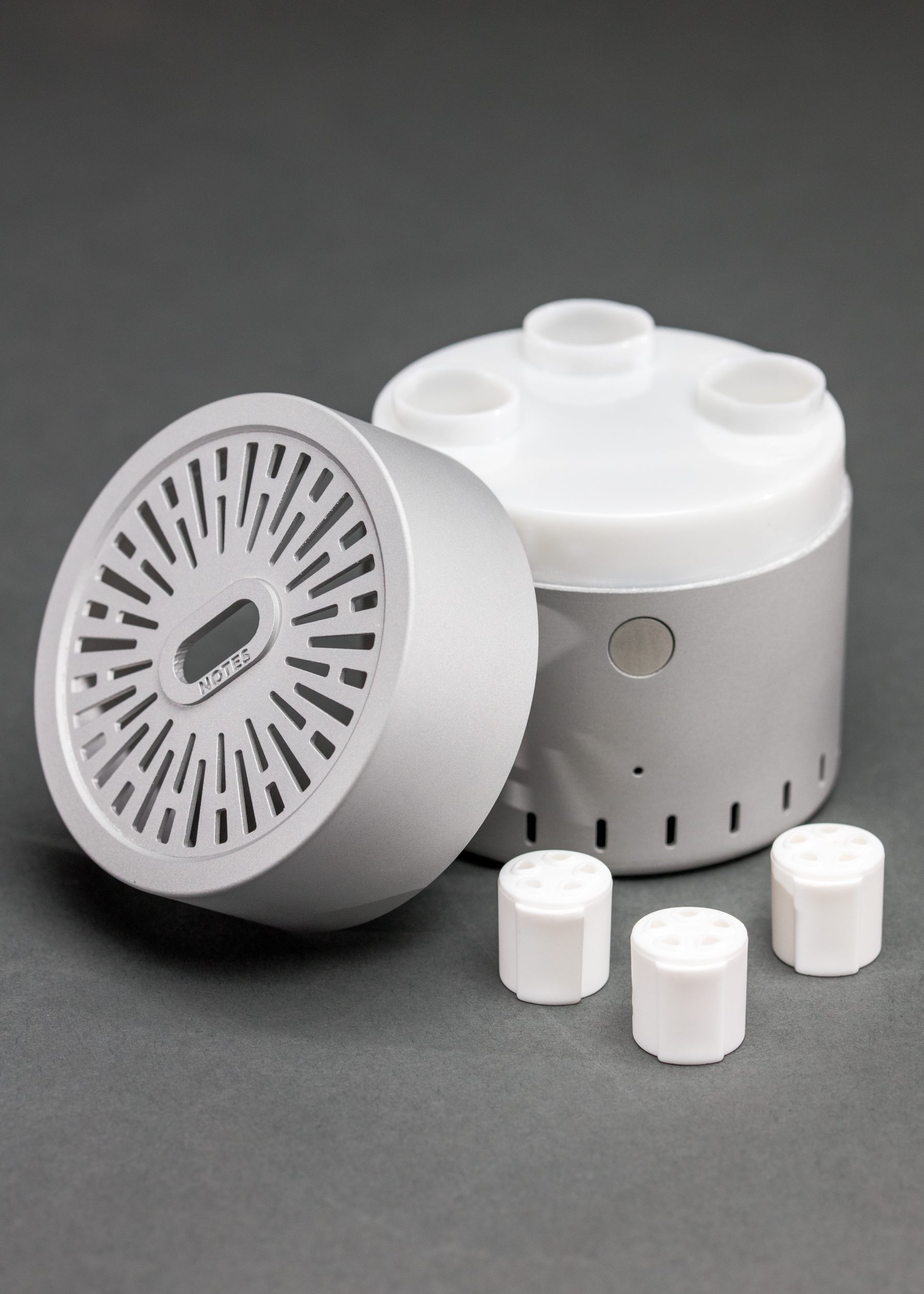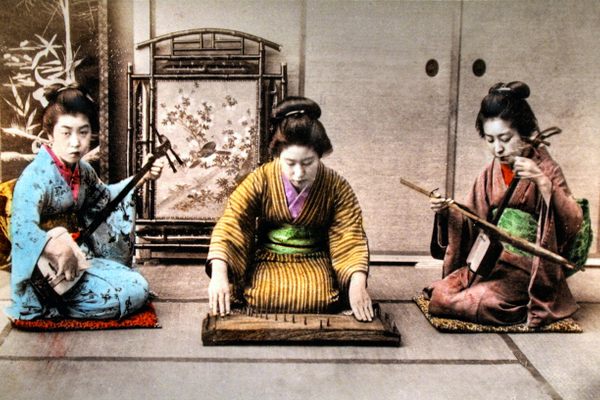This Scientist Has Created Speakers That Spew Scents, Not Sounds
The device uses digital smells to evoke different emotions.

Cyrano is David Edwards new invention to communicate through scent. (Photo: © Wayne E. Chinnock/Vapor Communications)
David Edwards is obsessed with olfaction. The Harvard University professor has spent the last five years building a library of digital smells. The goal? To figure out a way to transmit those aromas through technology—carrying and communicating scent memories through the air.
Now, he has stored a selection of these scents on a “scent speaker” called Cyrano. The device emits olfactory notes, which you can arrange into playlists on a smartphone app. With a few bursts, a home stereo system in a New York City apartment can evoke the scents of a Hawaiian vacation, or a Christmas market in Germany. On a long car trip, Cyrano can be an olfaction companion, transporting drivers to places beyond where they are actually going. The plastic, silver canister about the size of a few stacked tuna cans was designed to fit nicely in a cup holder, but can also be propped on a desk or nightstand.
Edwards, who developed devices for inhalable insulin, vitamins, and the tuberculosis vaccine back in the late 1990s, thinks of scents like notes in a song. He describes Cyrano, which debuted last month at the “What Emotion Smells Like” event at the Rubin Museum, as a stereo transmitting smell through the air like music. Everything you are able to do with digital sound can be done in a similar way with digital scent since both are transmitted through the air, he explains.
Cyrano’s first prototype contains three scent cartridges and produces 12 different aromas, like orange ginger, Tahitian vanilla, and even suntan lotion. Hooked up to the iOS app oNotes, a user can customize “mood medleys” or playlists of scents to digitally communicate smell and emotion.

Perhaps it is just a coincidence, but Cyrano de Bergerac did have quite a large nose. In the play about the playwright’s life, the actor playing Cyrano often wears a mask with an exaggerated long, pointed nose. (Photo: Public Domain/WikiCommons)
Scent is a cultural and personal experience. With Cyrano, which is named after the French poet and playwright, Cyrano de Bergerac, you can create aromatic moments and memories with scent just as you do with music. Indeed, scent can be as informative and immersive as sound. It can tell you if your toast is burning or if there is a gas leak, while also evoking memories and emotional experiences. “It could be a world of scent from the past; it could be a trip to Bora Bora; it could be a great breakfast,” Edwards says. Cyrano aims to transport users to those places.
“Of the five senses, the only sensation that is communicated directly to our brain is the sensation of scent,” he notes. The olfactory nerve leads right to the hippocampus, which is the part of the brain that processes memory. When we smell, our bodies sometimes react physically before cognitively becoming aware of the smell. Our physiological and neurological connection with aromas makes our ability to smell a powerful sensation.
While technology has exploited light and sound, scent has never been successfully integrated into the digital world. For one, scent particles have mass, which is more difficult to control. It is a property that has proven to be an obstacle for previous scent-technology apparatuses, like the late 1950s theater odor systems Smell-O-Vision and AromaRama, which filled the theater with different scents as a film played. Edwards says going to a movie with these scent technologies was like spilling whisky on your clothes–the scent particles lingering in the fabric. “In general scent has been too messy. The first scent is good, but then it just doesn’t go away.”

The four scent pods can provide an array of aroma combinations. (Photo: © Wayne E. Chinnock/Vapor Communications)
That’s why he designed Cyrano to deliver faint wafts of scent signals, even much less than an air freshener. The amount of scent is just enough so a person can detect it for a short amount time before the next scent in the mood melody starts to play. Scientific studies and data explains why certain scents biochemically connect to different emotional states like, for example, how peppermint perks us up and how lavender makes us feel calm. Since we also lose scent sensation after several minutes of exposure (also known as olfactory fatigue), the device creates an evolution of scent signals that can make you feel more awake, focused, or relaxed.
An initial batch of 500 Cyrano speakers are available to order now. Right now, Vapor Communications, the tech company that designed the product along with Edwards and Rachel Field, Cyrano’s co-founder and one of Edwards’ former Harvard engineering students, is focusing on the car market. However, Edwards believes the technology could also be used in stores and subways in its present form, and foresees scent opportunities in the entertainment industry in the future.
“We created this virtual world, now how do we get back to the real world and how do we bring the real world into a digital experience?” he says. “Our senses are really connected to what it means to be alive.”












Follow us on Twitter to get the latest on the world's hidden wonders.
Like us on Facebook to get the latest on the world's hidden wonders.
Follow us on Twitter Like us on Facebook